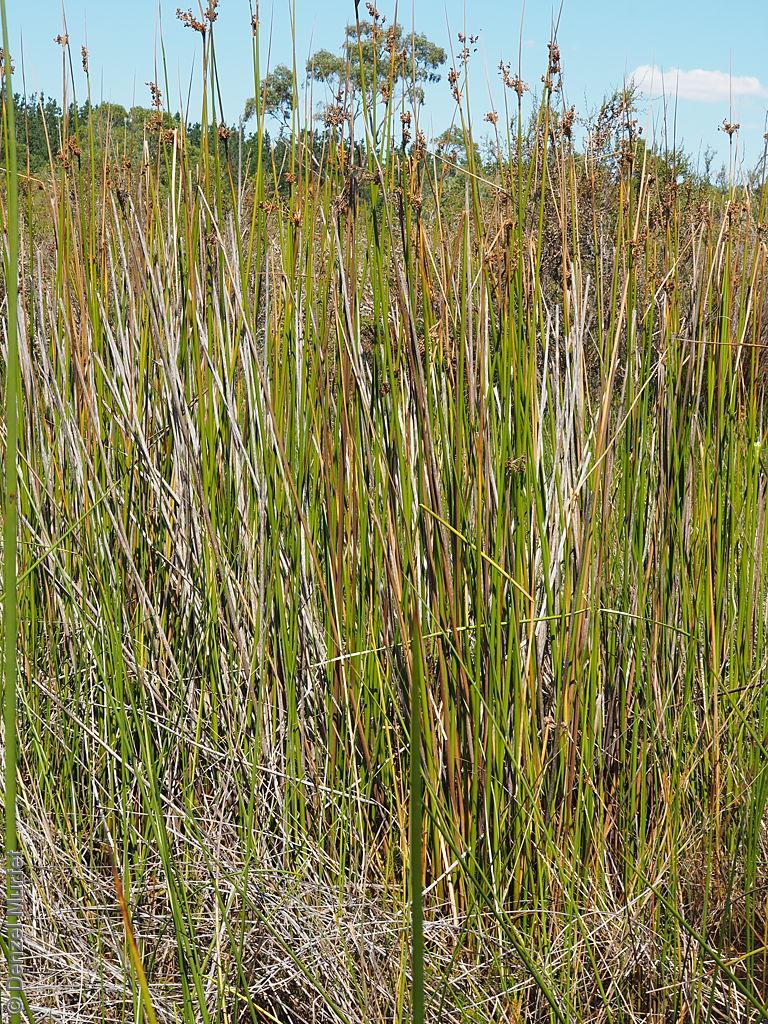
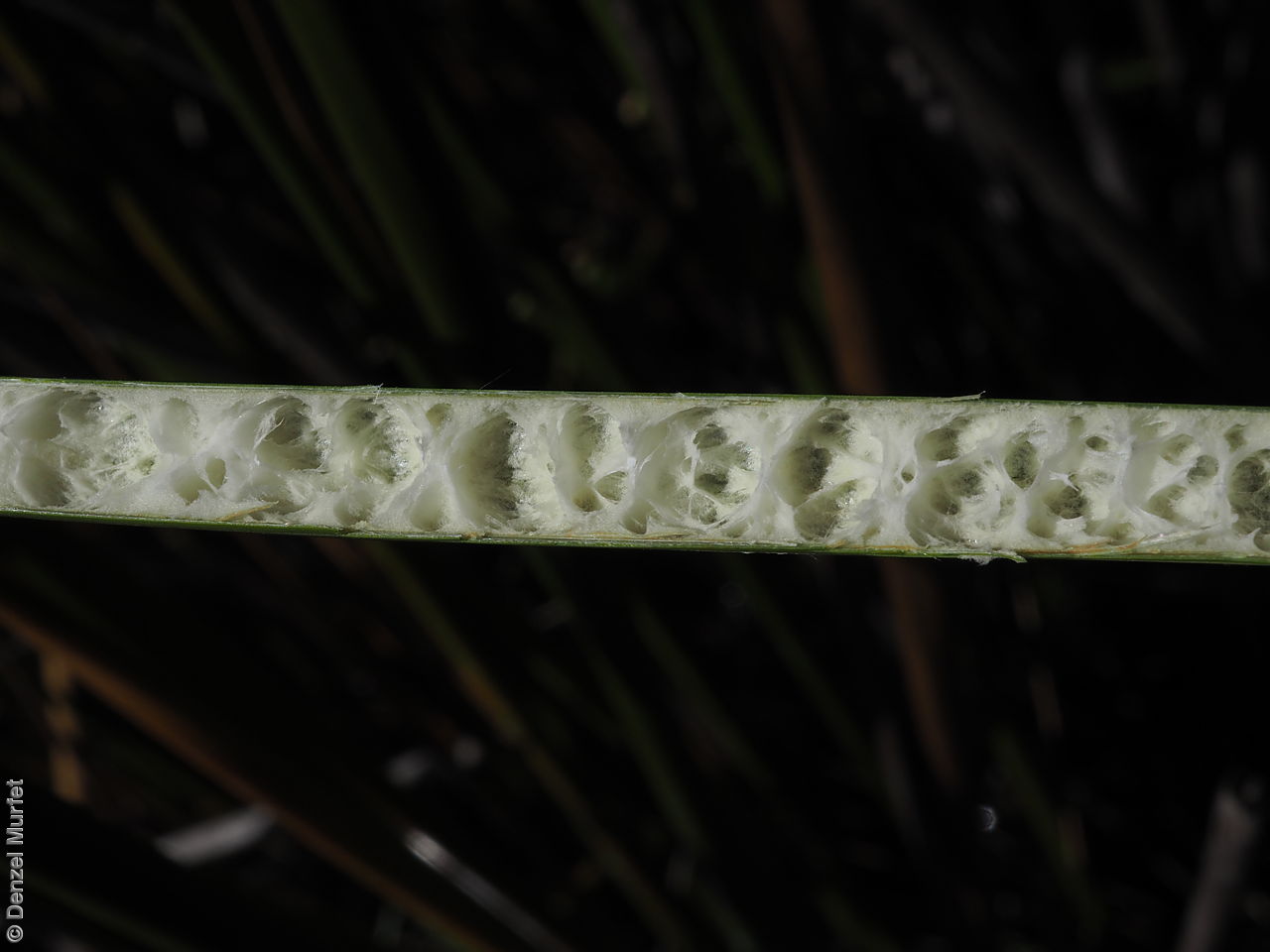
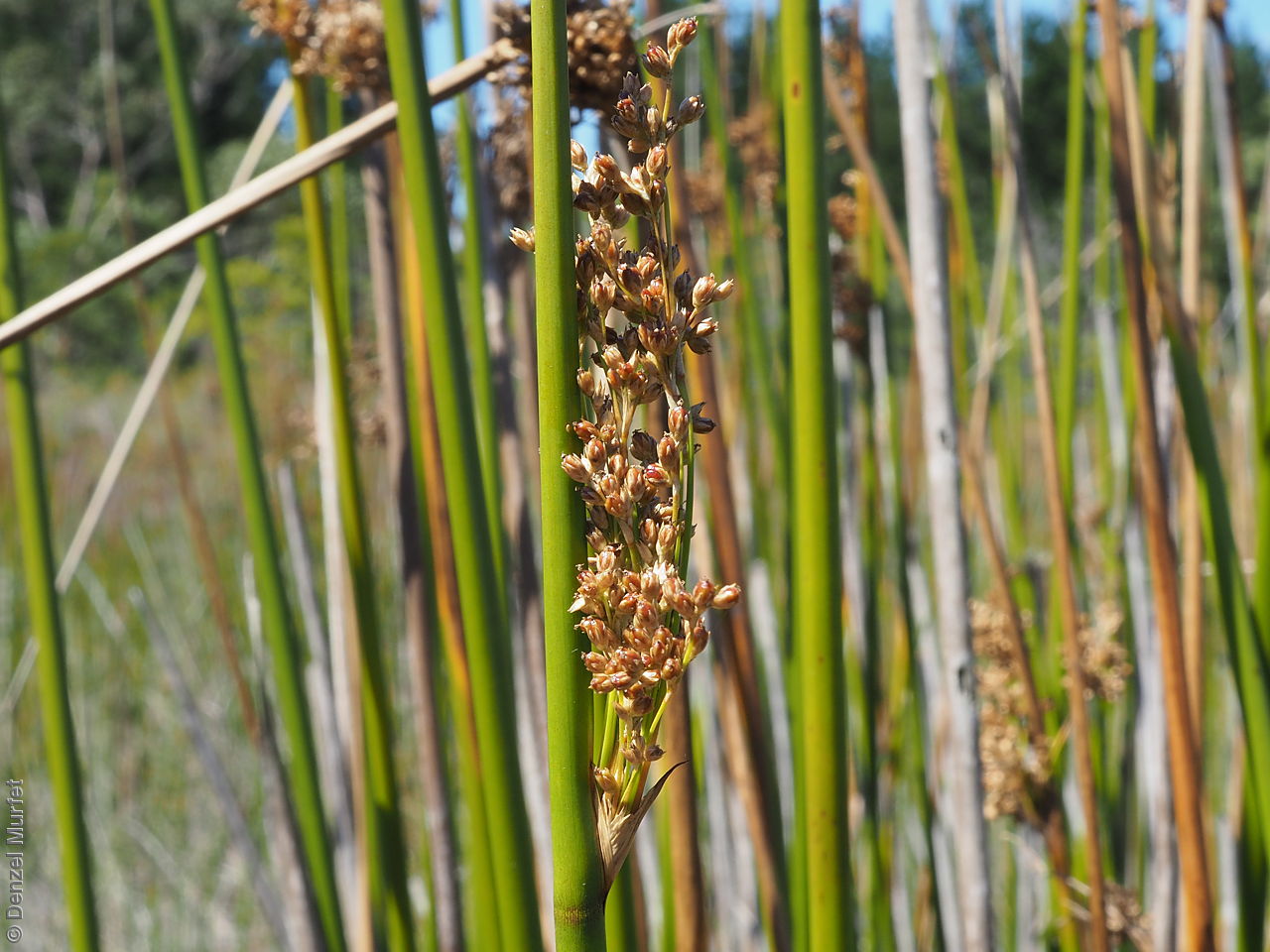
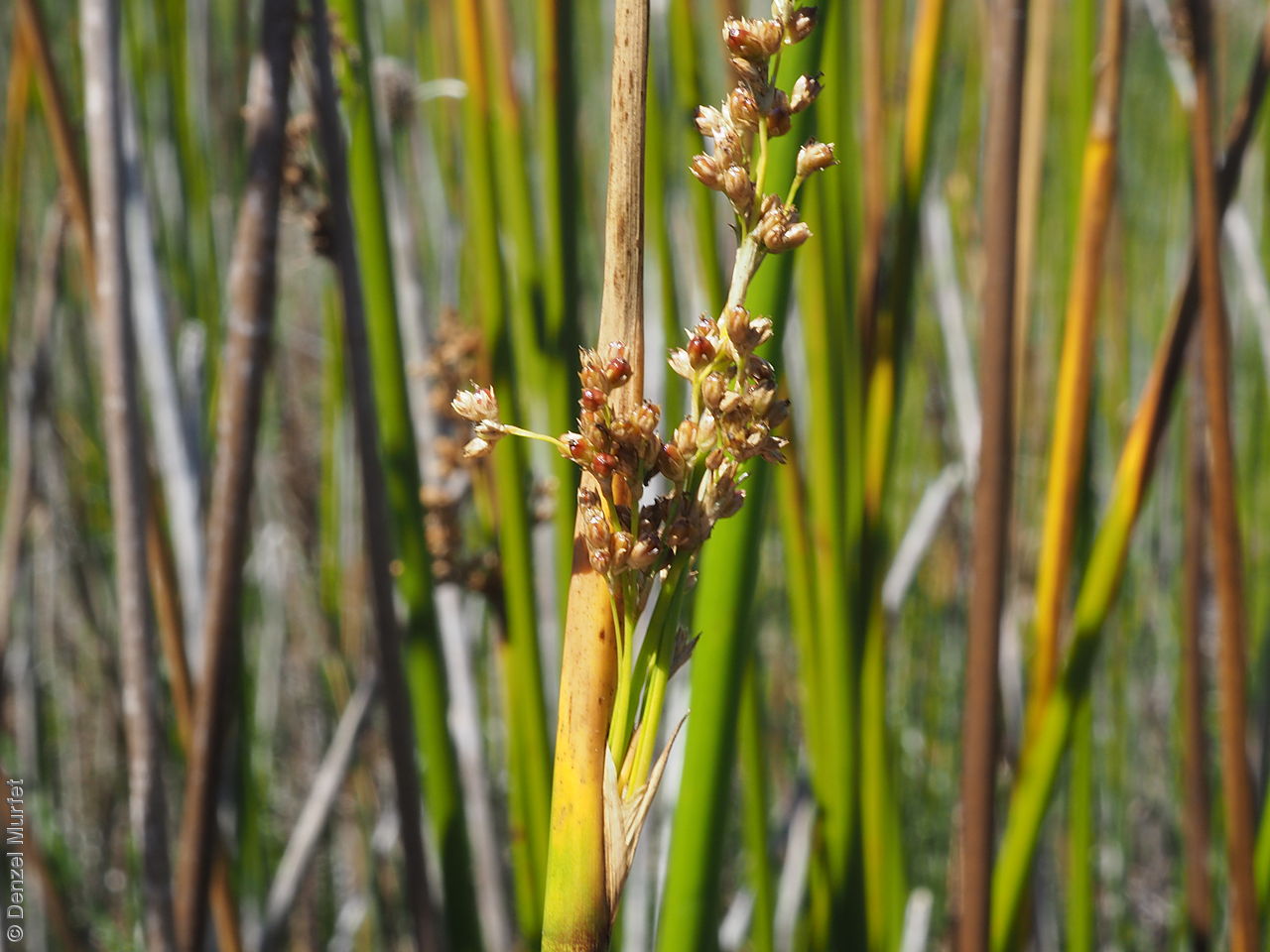
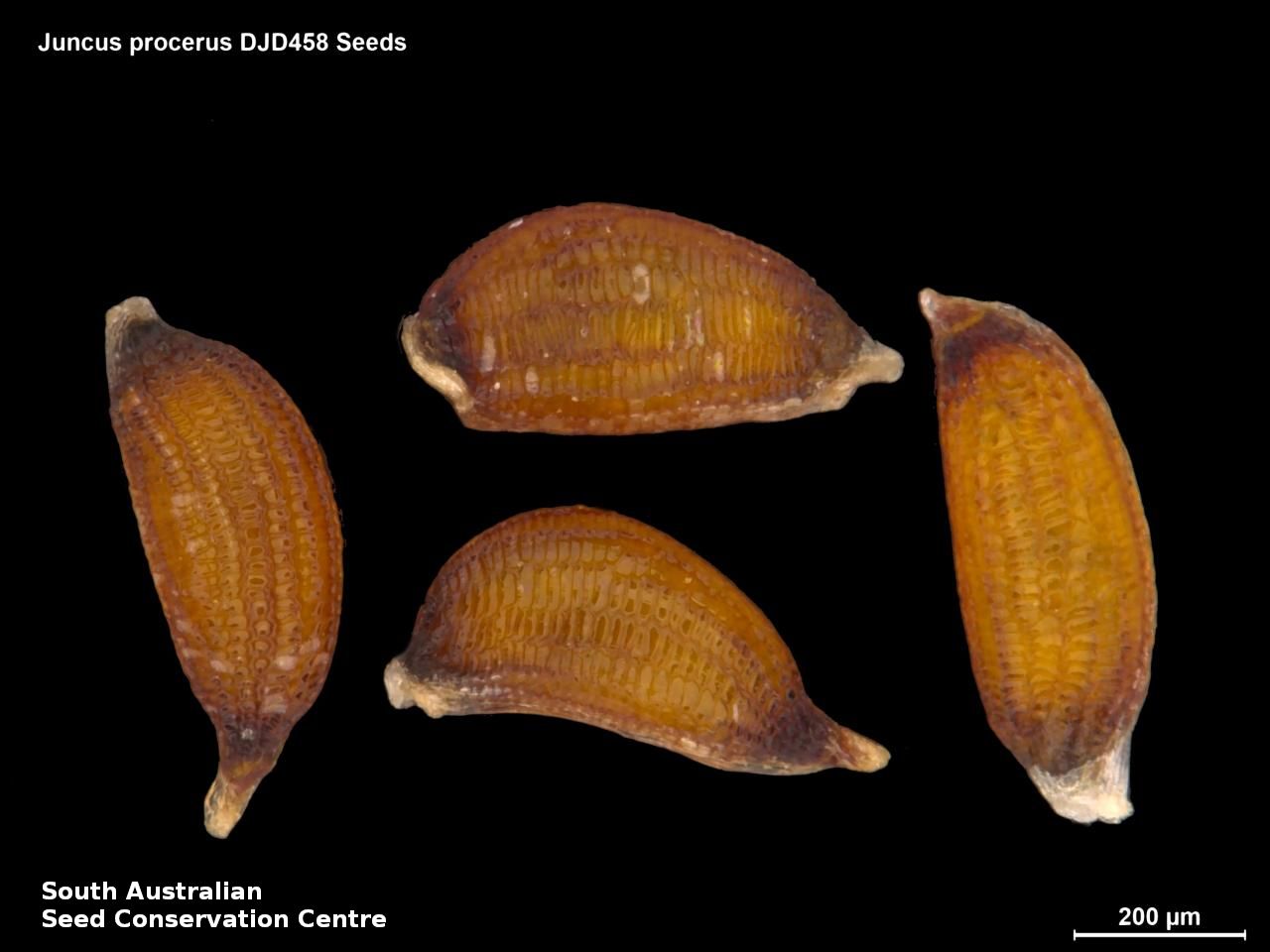


Botanical art
Etymology
Juncus from the Latin 'jungere' meaning to tie or bind; referring to the use of the rushes for weaving and basketry. Procerus from Latin meaning high, tall or long; referring to its habit.
Distribution and status
Found in the lower South-east in South Australia, growing in or at the edge of permanent or seasonal wet areas such as swamps, dams and roadside swales. Also found in New South Wales, Victoria and Tasmania (and New Zealand, Chile). Native. Rare in South Australia. Uncommon in New South Wales. Common in the other states.
Herbarium region: South Eastern
NRM region: South East
AVH map: SA distribution map (external link)
Plant description
Densely tufted robust perennial sedge with horizontal or ascending rhizomes. Stems arising from a rhizome, thick, soft, to 2 m high and 8 mm diameter, yellow-green, with an interrupted pith and fine striations. Leaves reduced to long broad brown basal sheaths. Inflorescence diffuse compact lateral panicle to 13 cm long with loosely clustered brownish flowers. Flowering between October to February. Fruits are clusters of golden brown ellipsoid capsules with numerous seeds. Seeds are tiny orange slightly curved ovoid seed to 0.6 mm long and 0.3 mm wide, with fine reticulated surface. Seed embryo type is broad.
Seed collection and propagation
Collect seeds between December and April. Collect fruits either by picking off the mature heads, those turning brown and come-off easily or break-off the whole spikes. Place the heads in a tray and leave to dry for one to two weeks. Then rub the heads with a rubber bung to dislodge the seeds. Use a sieve to separate any unwanted material. Be careful, as the seeds are very small. Seeds are brown and hard. Store the seeds with a desiccant such as dried silica beads or dry rice, in an air tight container in a cool and dry place. From one collection, the seed viability was high, at 100%.
| Location | No. of seeds (weight grams) | Number of plants | Date collected | Collection number Collection location | Date stored | % Viability | Storage temperature |
|---|---|---|---|---|---|---|---|
| BGA MSB | 340,000 (4.2 g) 340,000 (4.2 g) | 50+ | 11-Apr-2006 | DJD458 South Eastern | 1-Aug-2006 | 100% | +5°C, -18°C |
Number of plants: This is the number of plants from which the seeds were collected.
Collection location: The Herbarium of South Australia's region name.
% Viability: Percentage of filled healthy seeds determined by a cut test or x-ray.